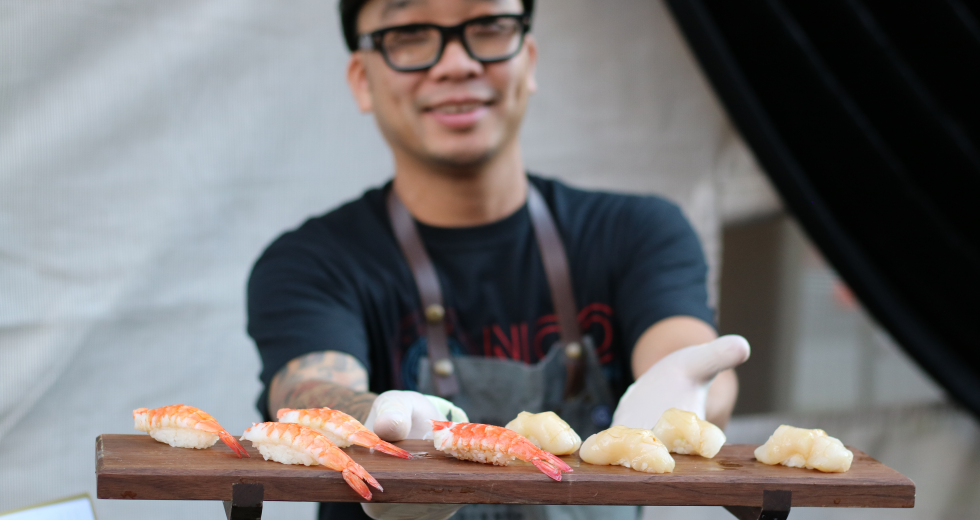The Farm-to-Fork Festival returned to the Capitol Mall last weekend, bringing life back to the summer-baked swaths of yellow grass that stretch between the state Capitol and the Tower Bridge. Under the glass-eyed gaze of the office buildings that line the mall — now sparsely occupied due to the rise of remote work — an estimated 150,000 visitors milled through stalls showcasing the agricultural and culinary bounty of the Capital Region. At the ticketed West End Revival event on a quieter end of the mall, a group of chefs and musicians remembered a time when it didn’t take a festival to fill this neighborhood with activity.
Before its redevelopment in the 1950s and ‘60s, Capitol Mall was part of the West End, a collection of neighborhoods that radiated from the Sacramento River to the Capitol. The area, Sacramento’s oldest business district, was home to one of the country’s largest Japantowns as well as a thriving jazz scene. It was an ethnically diverse community where Black families lived alongside those who traced their roots to southern Europe, Latin America and Asia — unusual in a country that remained mostly segregated. It was also a low-income neighborhood, with some streets lined by the dilapidated buildings, cheap boarding houses and soup kitchens that characterized a skid row.
Cecil L. Rhodes II, chef and co-owner of Nash & Proper, stands in
front of a photograph of Agua Caliente Cafe, one of many West End
businesses that were demolished during the redevelopment period.
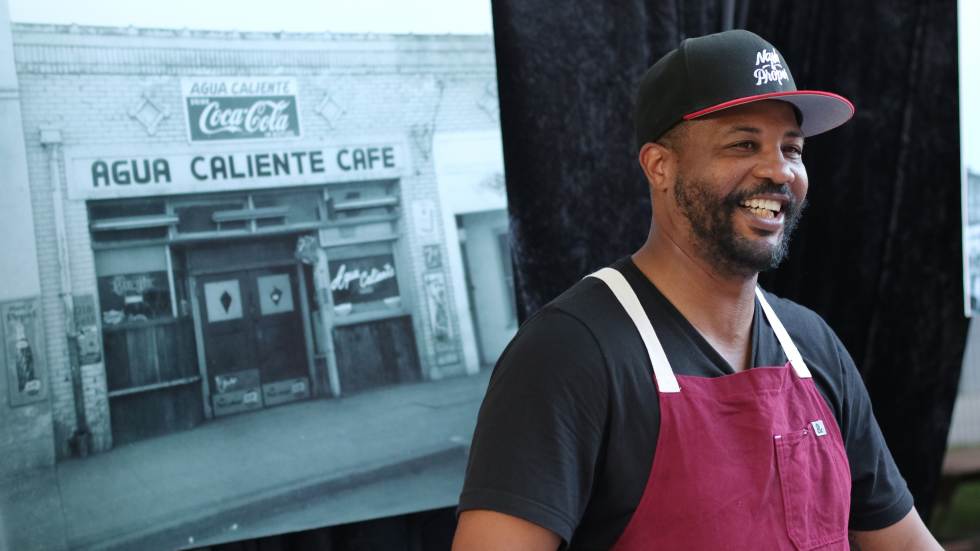
Whether you approached Sacramento by rail, road or riverboat, the West End was likely to be your first sight of the state capital. By the late 1940s, this fact became embarrassing to some of those who held decision-making power in the city. Dozens of city blocks were leveled and thousands of residents displaced in the name of urban renewal over the next few decades. One of the most ambitious redevelopment efforts was the Capitol Mall Project, envisioned as a “grand gateway” to the capital. Beginning in 1957, 15 blocks were demolished for Capitol Mall, including all of Japantown and the historic jazz clubs that once hosted household names like Billie Holiday and Louis Armstrong.
Binchoyaki brought sukiyaki udon in homage to Wakano Ura, a
restaurant (closed in 2008) that relocated from the demolished
Japantown to the 10th Street building across the street from
Binchoyaki’s current location.
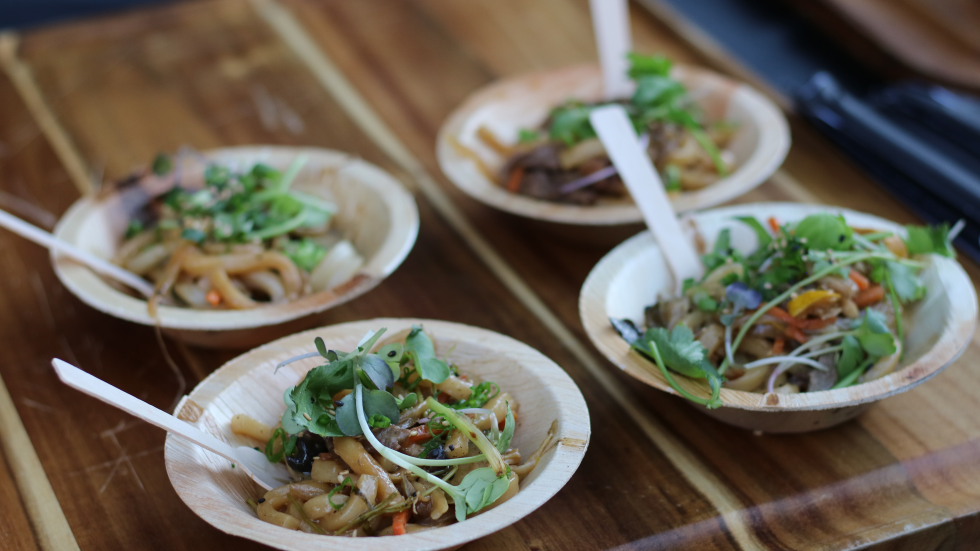
At the West End Revival event, live jazz reverberated between the Capitol Mall office buildings like an echo from the MoMo Club that once stood feet away from the stage. Local chefs served their interpretations of the cuisines that West End residents might have cooked in nearby restaurants and houses: Black soul food drawing from the traditions of West Africa and the Southeast, Mexican street food, homestyle Chinese and Japanese dishes with Californian ingredients. Televisions positioned near the plush seating areas screened the PBS documentary “Replacing the Past: Sacramento’s Redevelopment History,” the sound playing on wireless headphones so it wouldn’t drown out the music.
“We thought we could find a throughline with food, and use that as a vehicle to tell this very important story that has intersections of race, class and displacement,” says Ryan Royster, co-founder of the Last Supper Society, the “culinary collective” that organized the event. “We’re all here building off the legacy of something that was here, and that was destroyed. For one night, we thought we could capture that energy and revive it.”
–
Stay up to date on business in the Capital Region: Subscribe to the Comstock’s newsletter today.
Recommended For You
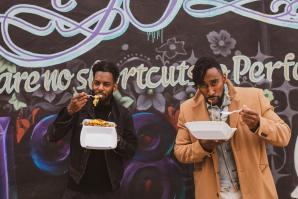
Getting to Know: Ryan Royster and Byron Hughes
Last Supper Society cofounders on building an experiential dining venture virtually
The cofounders of Last Supper Society describe their project as “a culinary collective that designs food experiences,” as well as “a first-of-its-kind interactive TV show.”

Neighborhood Favorite: Taiwan Best Mart
A homemade sausage business grows into a popular restaurant
“It all started with the sausage,” says Christine Chang, the
second-generation owner of Taiwan Best Mart.
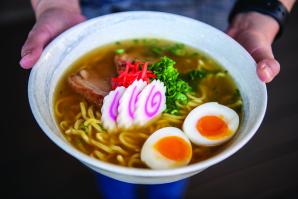
Bowls of Dreams
Sacramento ramen shops are keeping fans fed while adapting to market demands
For these chefs, cult followings are built through
next-level broth, experimentation and a healthy dose of
nostalgia.
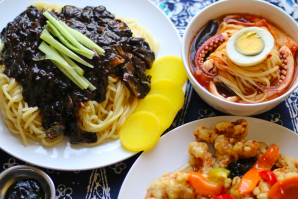
Neighborhood Favorite: Smile Market 2
The second branch of a longstanding supermarket serves Korean Chinese food
After more than 20 years selling Korean specialty items, the owners of Smile Food Market opened Smile Market 2, which serves fresh dishes like spicy seafood noodles and sweet-and-sour pork.
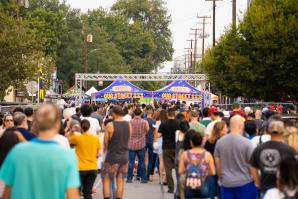
An Event for the People, by the People
The first Our Street Night Market since 2019 showcased Sacramento’s diversity
After the three-year pandemic hiatus, Our Street has grown into a tightly choreographed event that brings in visitors as far afield as the Bay Area. We asked Yellow Brick Group co-owner Shawn Kahan for his post-event takeaways.



